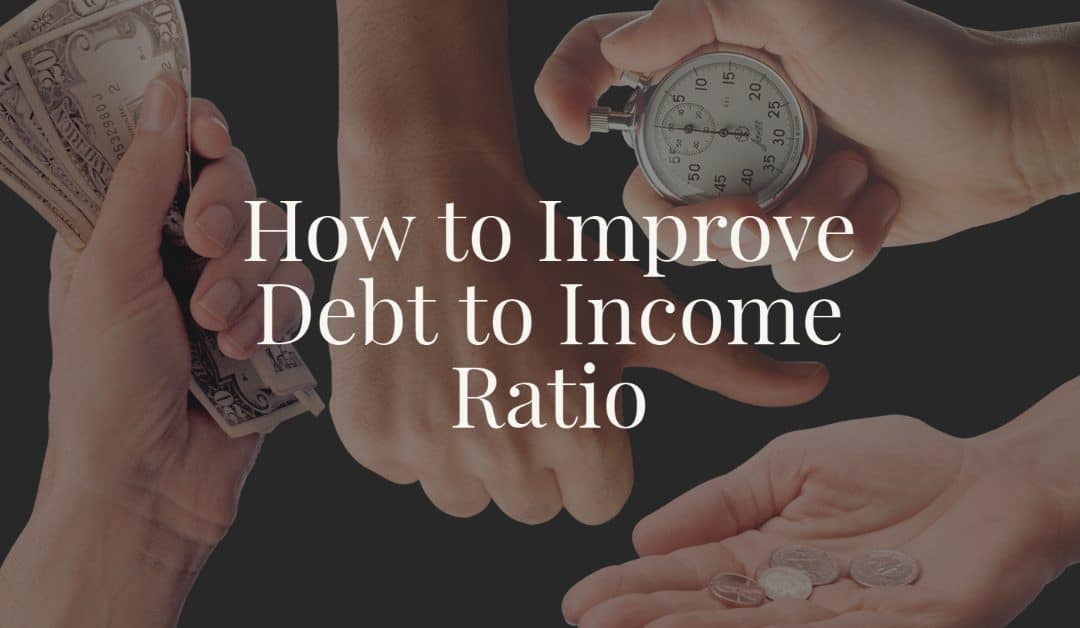If you’ve ever tried to get a mortgage or a car loan, you likely heard the term “debt to income ratio.” This ratio is a number that lenders use to determine how much more debt you can afford to pay each month. If your debt to income ratio is high, lenders will be less likely to loan money to you.
In 2020, many households were devastated by job loss and economic uncertainty. According to NerdWallet, “Of those who say their household financial situation has gotten worse since the pandemic began, 45% say they’ve taken on debt because of it. The same proportion, 45%, say they took money from savings to pay for bills and necessities in response to their worsening finances.”
When your income is low, and you are desperate for a loan, the lenders are looking at your debt to income ratio. Let’s look at how this all-important number is calculated and what lenders consider a high debt to income ratio.
How to Calculate Debt to Income Ratio
Your debt-to-income ratio is all your monthly debt payments divided by your gross monthly income.
To calculate your debt-to-income ratio, take these steps:
- Add up all your monthly debt payments.
- Divide that number by your gross monthly income (total earned before taxes and deductions)
Let’s look at an example:
$1500 per month Rent + $300 per month Car Loan + $200 per month Credit Card minimum payment = $2000 per month Total Debt Payments
Now you divide your total, $2000, by your gross monthly income of, let’s say, $6000.
$2000 divided by $6000 = .33 = 33 percent
So your debt to income ratio is 33 percent.
What Lenders Look For
According to Investopedia, “Lenders prefer to see a debt-to-income ratio smaller than 36%, with no more than 28% of that debt going towards servicing your mortgage.” The highest ratio that most lenders are willing to work with is 43%.
If you are trying to get a home loan, you’ll want to be sure that you only work with lenders offering a qualified mortgage. “Qualified” means that the lender follows the rules that make sure you are capable of repaying your loan.
According to the CFPB, “A small creditor (under 2 billion in assets and less than 500 mortgages in the past year) has to consider your debt-to-income ratio, but can still offer a Qualified Mortgage with a debt-to-income ratio higher than 43 percent.
Larger lenders may still make a mortgage loan if your debt-to-income ratio is more than 43 percent, even if this prevents it from being a Qualified Mortgage. But they will have to make a reasonable, good-faith effort, following the Consumer Financial Protection Bureau’s rules, to determine that you can repay the loan.”
Subprime Loans
If your credit score is low and you have a high debt to income ratio, it is less likely that you can afford to pay for any more obligations each month. With less than stellar qualifications, lenders often offer subprime loans that are not qualified and are often illegal or bordering on criminal. A subprime loan is a type of predatory loan.
Always read any loan terms carefully before signing. Lenders don’t want you to understand what they are doing to you.
How Subprime Loans Take Advantage
In a subprime loan, the lender offers a loan with high-interest rates and payments almost entirely interest-only for the first several months or years of the loan. Loans have two parts: the principal and the interest.
The principal part of the payment is what the actual goods cost. The interest part of the payment is what the lender is charging you for the privilege of borrowing money. With a subprime loan, there are also often hidden extra fees and charges rolled in.
Taking out a subprime loan means that the lender is getting paid for letting you borrow money while you are NOT paying down ANY of the principal. Then, when you default on the loan, the lender has already gouged enough money from you to repossess the car or foreclose on the house and still make more money, while you don’t own any equity at all on what you purchased.
Improving Your Ratio
To improve your debt to income ratio, you must look at all of your debt and check out the interest rates. If you have five debts and your highest interest rate loan is 22%, consider paying that down first.
Another way to pay off debt is to pay off the smallest account first to feel like you are gaining momentum. Above all, do not take out any new loans while working on getting your debt to income ratio lower. Keep working to pay off debt and keep your number below 36% to be a responsible user of credit.
What You Can Do
Read over any contracts that you have with lending institutions and think about paying off or negotiating with lenders who have given you subprime loans. These creditors are not lending with truth or integrity.
When your livelihood is at stake, sometimes you need to fight back with some legal help to overcome a bad financial situation that you did not solely create. When lenders offer subprime loans, they often do so knowing that you will default and face the consequences while they sit back and make money.
Find Help
If you have questions about how to get out of a predatory loan that is keeping your debt to income ratio high, contact the experienced consumer credit protection attorneys at LawZebra. Our network of attorneys spans the country, and we specialize in helping consumers who are struggling to keep up with their financial obligations due to predatory lending practices.

